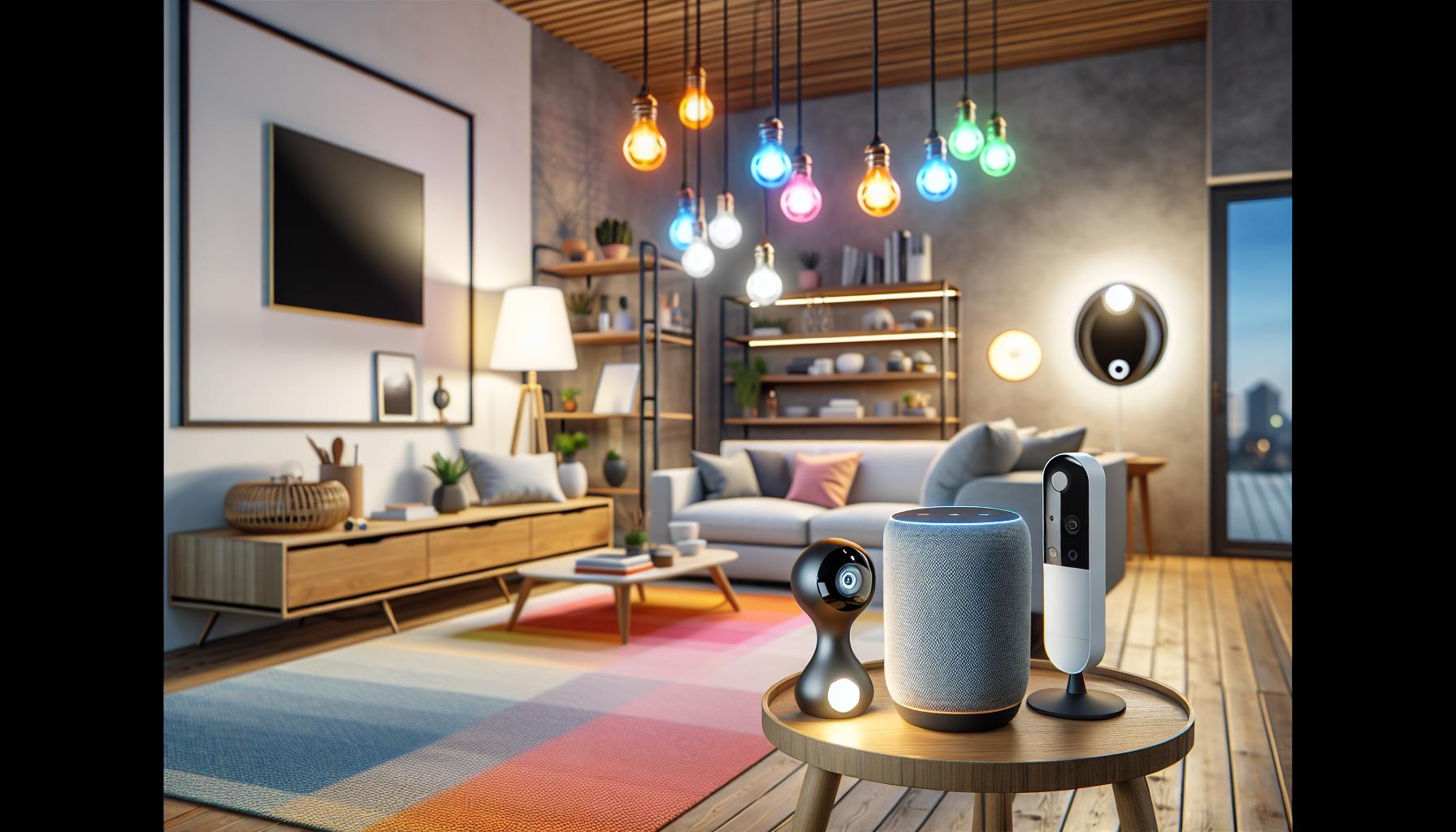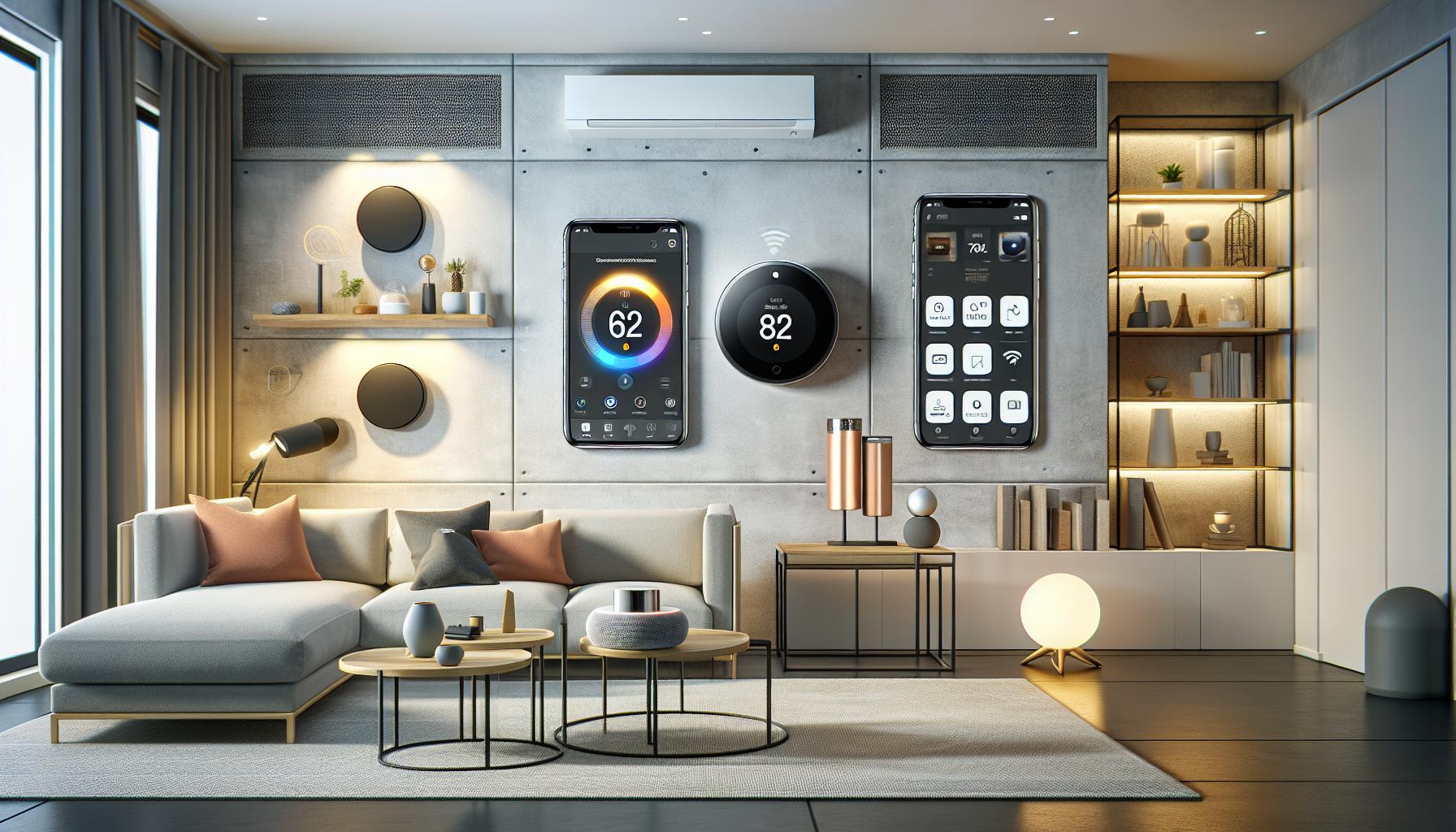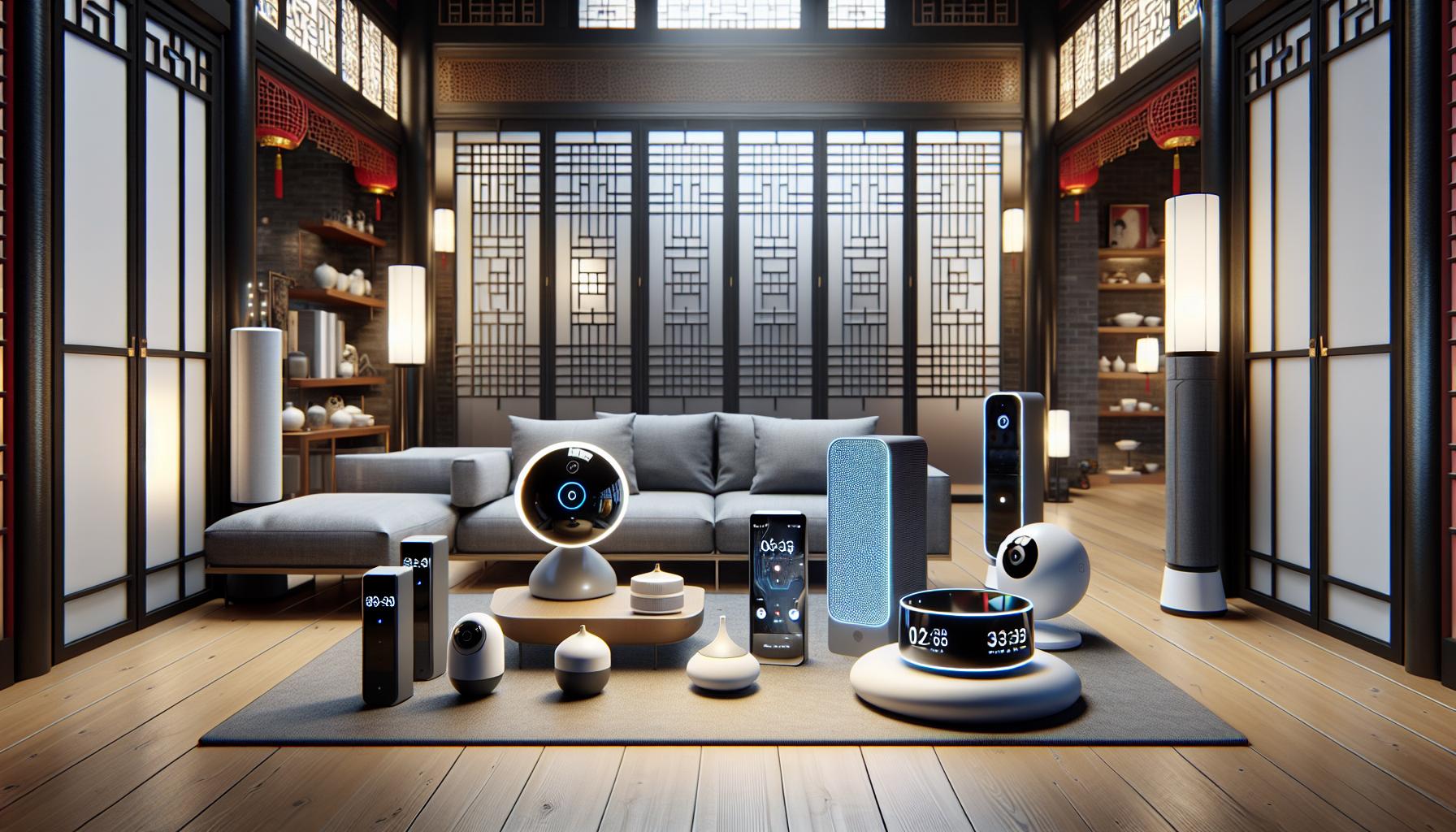Key Takeaways
- Rapid Growth in Smart Home Technology: China is leading the global market in smart home gadgets, with significant advancements in innovation and manufacturing, improving efficiency, security, and convenience in everyday life.
- Diverse Product Offerings: A wide range of smart home devices is available, including smart speakers, light bulbs, and security cameras, designed to meet various consumer preferences and enhance living standards.
- AI and IoT Integration: The incorporation of artificial intelligence and the Internet of Things in smart devices allows for seamless user experiences, such as personalized assistance and efficient energy management.
- Key Players in the Market: Leading brands like Xiaomi, Huawei, and Lenovo are at the forefront of smart home technology, offering extensive ecosystems of integrated products that focus on affordability and functionality.
- Sustainability Trends: New smart home gadgets emphasize energy efficiency and sustainable practices, with technologies designed to reduce consumption and promote environmentally friendly usage.
- Enhanced User Experience: The focus on personalized and intuitive user interfaces enhances the interaction with smart devices, making home automation more accessible and enjoyable for consumers.
In recent years, smart home gadgets have taken the world by storm, and China stands at the forefront of this technological revolution. With its rapid advancements in innovation and manufacturing, the country has become a hub for cutting-edge devices that enhance daily living. From intelligent lighting systems to advanced security cameras, these gadgets not only offer convenience but also elevate the overall quality of life.
As consumers increasingly seek seamless integration of technology into their homes, Chinese manufacturers are responding with a diverse range of products that cater to various needs and preferences. This article explores the latest smart home gadgets emerging from China, highlighting their features, benefits, and the impact they have on modern living. Discover how these innovations are reshaping homes and redefining the way people interact with their environments.
Smart Home Gadgets China
Smart home gadgets in China represent a significant segment of the global technology market. Manufacturers design various devices aimed at improving efficiency, security, and convenience within households. These gadgets typically include intelligent lighting systems, smart thermostats, connected appliances, and advanced security cameras.
Chinese companies such as Huawei, Xiaomi, and Alibaba lead in the development and distribution of smart home technology. They focus on incorporating artificial intelligence (AI) and the Internet of Things (IoT) into everyday products, providing seamless integration and user-friendly interfaces. The advancements in voice recognition and automation further enhance the usability of these devices.
The diversity of smart home products caters to various consumer preferences. Examples include energy-efficient smart bulbs that allow users to control lighting remotely, smart locks that enhance home security, and AI-powered home assistants that facilitate daily tasks. These gadgets not only improve living standards but also promote energy conservation and enhanced safety.
Increasing internet connectivity, combined with lower prices for smart devices, fuels the growth of smart home adoption in urban and rural areas alike. With millions of devices in use, Chinese manufacturers continue to innovate, pushing the boundaries of what smart home technology can achieve. Festivities, such as Singles’ Day and other shopping events, demonstrate the rising consumer interest in home automation solutions.
Popular Smart Home Devices

Smart home devices from China offer innovative solutions to enhance convenience and security in everyday life. The following gadgets exemplify the best in smart home technology.
Smart Speakers
Smart speakers provide integrated voice control for various household tasks. Brands like Xiaomi’s Mi AI and Alibaba’s Tmall Genie provide users with access to music, news, and home automation features. These speakers support multiple languages and integrate seamlessly with other smart devices, allowing voice commands to control lights, thermostats, and security systems. Additionally, many smart speakers incorporate virtual assistants that learn user preferences over time, creating a personalized experience.
Smart Light Bulbs
Smart light bulbs deliver customizable lighting options and energy savings. Chinese manufacturers like Philips Hue and Yeelight offer products that can change color and brightness based on user preferences. These bulbs connect to home networks via Wi-Fi or Zigbee, enabling remote control through mobile apps or voice commands. Programmable features allow users to schedule lighting patterns and automate settings for increased efficiency, enhancing both comfort and security.
Smart Security Cameras
Smart security cameras enhance home safety with features such as motion detection and remote monitoring. Brands like Hikvision and Xiaomi provide high-definition video quality and real-time alerts via smartphones. Many models offer night vision, two-way audio, and cloud storage options for improved surveillance. Integration with smart home ecosystems allows users to monitor their homes from anywhere, making these devices essential for modern home security solutions.
Innovative Technology in Smart Homes

Smart home technology continues to evolve rapidly, with innovations shaping how individuals interact with their living spaces. Notable advancements in AI, machine learning, and IoT enhance user convenience and efficiency.
AI and Machine Learning Integration
AI and machine learning play critical roles in the development of smart home gadgets. Manufacturers incorporate these technologies to enable devices to learn from user preferences and behaviors. For example, smart thermostats adjust temperature settings based on learned patterns, optimizing energy consumption. Smart speakers, like those from Xiaomi and Alibaba, utilize natural language processing to offer personalized assistance, responding to voice commands with accuracy. The integration of AI enhances security systems by improving facial recognition features, enabling quicker alerts for potential intrusions.
Internet of Things (IoT) Trends
Trends in IoT have significantly impacted smart home devices. Connected appliances, such as refrigerators and washing machines, communicate with users and other home devices, facilitating remote control and monitoring. Data analytics allows these appliances to predict maintenance needs and provide feedback on energy usage. Additionally, interoperability between devices promotes seamless integration, offering users a unified home ecosystem. As China’s infrastructure improves, the growth of 5G technology further accelerates IoT adoption, enabling faster response times for connected devices and expanding their capabilities.
Leading Brands and Manufacturers

China boasts several leading brands and manufacturers in the smart home gadget sector, each contributing significantly to this rapidly growing market.
Xiaomi
Xiaomi has established itself as a dominant player in the smart home device market. The company offers a comprehensive ecosystem of products, including smart cameras, lighting, appliances, and home security systems. Known for affordability and quality, Xiaomi’s devices integrate seamlessly with its Mi Home app, allowing users to control multiple gadgets from one platform. The Mi AI speaker serves as a central hub, enabling voice commands for various smart features. Xiaomi consistently innovates, introducing products like the Mi Smart Sensor Set, providing enhanced safety and automation capabilities.
Huawei
Huawei positions itself as a technological leader, integrating advanced features and high-quality design in smart home products. Its Smart Home ecosystem emphasizes compatibility and connectivity, allowing devices to work in unison. The Huawei AI Cube, a combination of a smart speaker and 4G router, exemplifies this approach, offering high-speed internet while providing voice-activated assistance. Moreover, the company’s commitment to research and development leads to advancements in artificial intelligence, enhancing user experiences across its smart home offerings, from energy-efficient lighting to intelligent security solutions.
Lenovo
Lenovo is making strides in the smart home market with innovative gadgets aimed at enhancing user convenience. The brand’s range includes smart displays, such as the Lenovo Smart Clock, which combines alarm functionality with Google Assistant integration. Additionally, Lenovo’s focus on smart appliances, like the Lenovo Smart Laundry, emphasizes automation and energy efficiency. By leveraging their expertise in computing, Lenovo continues to develop practical solutions, enabling users to manage daily tasks while enjoying the benefits of a connected home.
Future Trends in Smart Home Gadgets
Smart home gadgets continue to evolve, driven by innovation and consumer demand. Emerging trends emphasize sustainability, energy efficiency, and enhanced user experiences.
Sustainability and Energy Efficiency
Sustainability in smart home gadgets focuses on reducing energy consumption and promoting environmentally friendly practices. Many devices now incorporate energy-efficient technologies, such as smart thermostats that adjust heating and cooling based on usage patterns, leading to energy savings of up to 30%. Manufacturers are increasingly utilizing renewable materials in construction and packaging of products. Additionally, smart lighting systems with adaptive brightness features save energy by dimming during daylight hours. Companies like Philips and Yeelight are leading the charge with energy-efficient LED bulbs that can be controlled remotely, encouraging users to adopt greener habits.
Enhanced User Experience
Enhanced user experience in smart home gadgets prioritizes convenience and personalization. AI and machine learning technologies enable devices to learn user preferences. For instance, smart speakers like Xiaomi’s Mi AI and Alibaba’s Tmall Genie offer customized recommendations based on interaction history, creating a tailored environment for users. User interfaces are becoming more intuitive, with touch and voice controls simplifying operation. Products like smart fridges now include features such as inventory tracking and recipe suggestions, enhancing functionality and usability. Furthermore, seamless integration across platforms allows users to control multiple devices through a single app or voice command, elevating the overall experience.
The Evolution of Smart Home Gadgets
The evolution of smart home gadgets in China reflects a dynamic fusion of innovation and practicality. As manufacturers continue to push boundaries with advanced technology like AI and IoT, consumers benefit from a growing array of options that enhance daily living.
With brands like Xiaomi and Huawei leading the charge, these devices are not just about convenience; they also prioritize energy efficiency and security. The ongoing advancements and increasing accessibility of smart home products indicate a promising future.
As technology becomes further integrated into everyday life, smart home gadgets from China are set to redefine how individuals interact with their living spaces, making homes smarter and more efficient than ever before.

